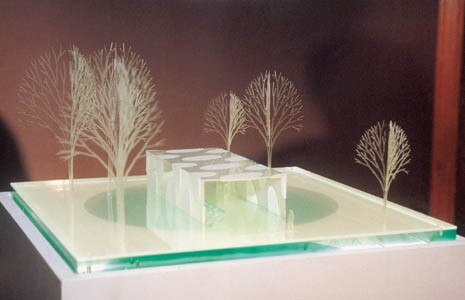Light and transparent, with glass and water as its dominating elements, the pavilion seems to be both timeless and immaterial; the design however incorporates a number of subtle links with tradition and the past: from the structural grid in perforated aluminium which recalls the lace for which the Flemish city is famous throughout the world to the circular pools of water which recall the cobblestones of the Burg piazza, whilst the rectangular box placed alongside the water is a silent witness of the fourth (missing) facade of the Burg.
All this movement is not just by chance, Bruges (together with the Spanish town of Salamanca) has been chosen as European city of culture for 2002. The simple and effective idea launched in Athens in 1985 whereby each year two different European cities bring their own heritage to the forefront (with restorations and new projects) and provide a rich array of cultural events to attract visitors from all over the world.
http://www.brugge2002.be
http://www.salamanca2002.com




